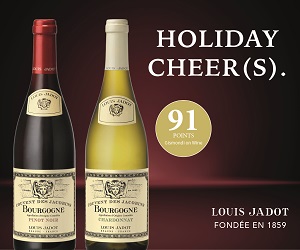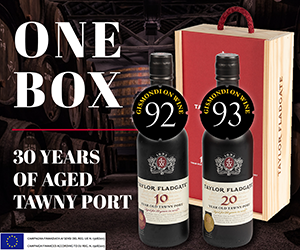The oft-repeated wine axiom -- delivered with a certain smugness by some French producers -- that all champagne is sparkling wine, but not all sparkling wine is champagne, lost a lot of its lustre last month with the news that the French government has agreed to stretch the boundaries of what was once the most sacred appellation in the wine world.
Technically, nothing will change since the new areas will reside inside the redrawn map of AOC Champagne but morally -- and perhaps more importantly, intellectually -- the Champenoise who were once devoted to their unique appellation now appear, like the emperor, to have no clothes.
The now not-so-strictly delimited Appellation d'origine Contrôlée (AOC) is getting bigger in an effort to meet rising demand from growing markets in Russian, India and China. The translation to that is, there's easy money to be made elsewhere and with a super-weak U.S. dollar, now is the time to expand Champagne production and go after new markets.
Last week with one stroke of the pen, the French government erased the sacrosanct AOC limits of Champagne, sweeping the esoteric notion of terroir under the rug like so much dirt. The press release says this expansion "formalizes the organization of the geographic area into two zones: the working zone of 675 districts, and the [grape] production zone of 357 districts." The vote was unanimous, in effect altering a law in place since 1927. More to the point, it will make for some very rich farmers.
The Telegraph in London is reporting some villages that are already producing grapes will see their vineyard area increased. Until the boundaries are fully delimited, local mayors are fighting to be included within them, as a hectare of vines in the region is worth 350 times more than the same surface area of wheat.
Now that we know that terroir and AOCs are more about the money than the dirt, I guess we can loosen our grip on the idea that French AOCs are special places. Maybe it's not the chalk, or the wind, or the people, or the hillsides that make Champagne a special place. Maybe it is just the map makers.
We can only wonder what producers of cava in Spain; sekt in Germany; and méthode champenoise sparkling wine from around the world are thinking this week watching the French deconstruct one of the great symbols of place and terroir to sell a few extra cases of bubbly.
In view of this stunning announcement I'm recommending anything but champagne today. Just be sure it is made in the strictly controlled (at least for now) Champagne-method.
We begin in Spain where cava remains highly undervalued, as aptly illustrated by the Paul Cheneau Brut Cava. Look for a lively fresh sparkler with a fresh, elegant style and just a touch of sweetness. The flavours are a mix of nutty, toasty, citrus peel with mineral, melon skin and nectarine notes. Fresh, well-balanced, and highly affordable at about a fifth of the price of a decent bottle of champagne.
New Zealand is certainly cool enough to grow the required high-acid sparkling wine fruit as found in the Lindauer Brut, a blend of chardonnay and pinot noir with a green apple, grassy, floral, citrus nose. You can serve a variety of seafood appetizers alongside its sweet lemon, green apple skin, toasty, honey, peach pit flavours.
Blanquette de Limoux (mauzac and chardonnay) and Crémant de Limoux (chardonnay and chenin blanc) blends are said to be older than Champagne, with a 1531 start date. In this case we can recommend the Antech Cuvée Expression Crémant de Limoux Brut and its creamy, floral, nutty, green apple, brioche aromas and flavours. Crisp, round and elegant, it has a touch of sweetness and bitter citrus rind in the finish.
Back to Spain for the signature Segura Viudas Heredad Brut Reserva. The top of the line blend is big on toasted nut and floral aromas on the nose. Typically dry and firm, the plate is a mix of nutty, mineral, peach, baked pear, caramel, lemon flavours. An elegant, suave, sparkler with slightly more body than most cavas. Best served with seafood and or salty tapas.
A recent encounter with Gloria Ferrer Sonoma Brut confirms it is still among the leading bubblies made in California. The nose is an interesting mix of apple-cherry-strawberry notes mixed with toasty mineral nutty, cherry, peach, baked apple citrus flavours. Vancouverites will appreciate the winery's food recommendations for Pacific Rim dishes such as mussels with coconut curry, Pad Thai, shrimp satay with peanut sauce and fire cracker shrimp with mango salsa.
Mumm Napa Brut Prestige is another "California" sparkler, at least more literally these days as it contains grapes from across the region. It is quite crisp and dry with floral green apple undertones. The flavours are a mix of honey and toasted nuts in a fairly tight, lean style that definitely is best when food accompanies each glass.
Sparkling Picks
PAUL CHENEAU BRUT CAVA N/V, PENEDÈS, Spain
Price: $17
UPC: 00839154000075
Score: 88/100
Remarks: Nutty, toasty, citrus peel, mineral, melon skin and nectarine flavours.
LINDAUER BRUT CHARDONNAY - PINOT NOIR N/V, New Zealand
Price: $17
UPC: 09414024500971
Score: 87/100
Remarks: Sweet lemon, green apple skin with honey, peach pit flavours. Affordable, fun style.
ANTECH CUVÉE EXPRESSION CRÉMANT DE LIMOUX BRUT 2004, France
Price: $25
UPC: 03274893303563
Score: 87/100
Remarks: Green apple, citrus, honey, nutty, cool pear flavours.
SEGURA VIUDAS HEREDAD BRUT RESERVA, PENEDÈS, Spain
Price: $32
UPC: 00033293650003
Score: 88/100
Remarks: Very elegant, suave, nutty Cava. Best served with salty tapas.
GLORIA FERRER SONOMA BRUT, SONOMA COUNTY, California
Price: $30
UPC: 00033293111009
Score: 88/100
Remarks: Cherry, strawberry, apple, toasty mineral aromas with a floral, baked pear notes.
MUMM NAPA BRUT PRESTIGE N/V, California
Price: $26
UPC: 00087000104310
Score: 88/100
Remarks: Big green apple, floral, citrus, nutty, honey flavours.

 quicksearch
quicksearch






